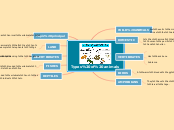por Tristan DeCarlo 12 anos atrás
991
Frogs
Frogs exhibit various adaptations that help them survive in their environments. They have moist skin to absorb oxygen and moisture, strong legs for efficient movement, and long sticky tongues to catch insects.









